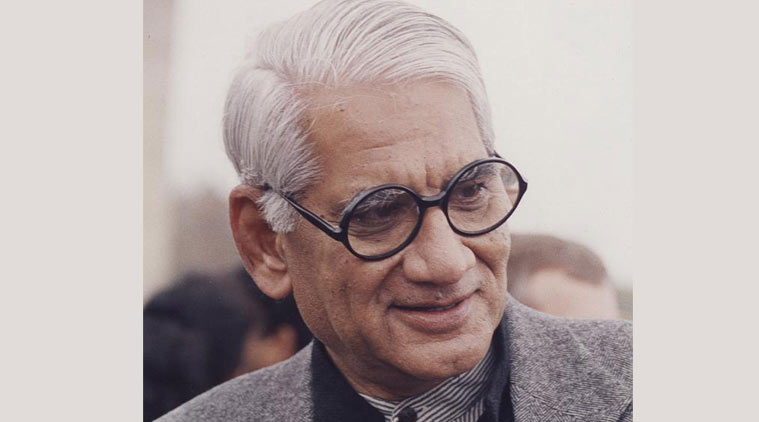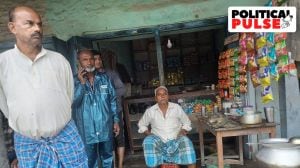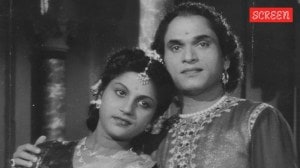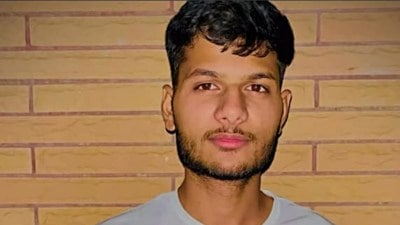Stay updated with the latest - Click here to follow us on Instagram
Charles Correa No More: ‘His works were ahead of time’
An inspiration to three generations of architects, Charles Correa is considered by his contemporaries as one of the most original minds.
 Charles Correa, one of India’s greatest urban planners, died at the age of 84 (Source: Express Archives)
Charles Correa, one of India’s greatest urban planners, died at the age of 84 (Source: Express Archives)
Deeply engaged with the idea of people and their relationship with their city, Charles Correa was coherent and discussing the subject until 48 hours before he passed away on June 16.
Rahul Mehrotra, Correa’s son-in-law and a prominent architect himself, says the veteran, albeit wheelchair-bound, had travelled to Goa last week to the Charles Correa Foundation to share his thoughts on how the campus, designed and set up by him, could be improved.
Currently in the city to launch his latest book, Kumbh Mela: Mapping the Ephemeral Megacity, Boston-based Mehrotra had gifted Correa a copy five hours before he was admitted to Breach Candy hospital on Thursday. “He said he would read it as soon as he is feeling better but I don’t think he got a chance,” says Mehrotra.
 The funeral mass will take place at the church.
The funeral mass will take place at the church.Correa, who had been suffering from cancer for the last three years, passed away “peacefully” at the hospital at 11.45 pm Tuesday. He was 84. He is survived by his wife Monika, son Nakul and daughter Nandita.
The funeral mass will take place on Thursday, 11 am, at the Portuguese Church, Dadar. This will be followed by the burial at the Haines Road cemetery at 12.15 pm.
An inspiration to three generations of architects, Correa, who began his career in the 1950s, is considered by his contemporaries as one of the most uniquely original minds. This, they say, is evident in nearly all of his works.
“At the age of 28, he designed the Sabarmati Ashram,” points out urban activist and Correa’s friend Cyrus Guzder, also the governor of the Mumbai Metropolitan Regional Heritage Society.
His other notable works include the Vidhan Bhavan in Madhya Pradesh, the Jawahar Kala Kendra in Jaipur, the Kala Academy in Goa, the Ismaili Centre in Toronto, among others. He was also the chief architect of Navi Mumbai, and worked on it alongside Shirish Patel and Praveena Mehta.
However, according to conservation architect Abha Narain Lambah, his best work remains the Champalimaud Centre in Lisbon — “his swan song, which he designed in his 80th year”.
Elaborating on the design, Guzder says it’s an extension of his belief that a structure should reflect its context. The cancer research centre stands at a spot that overlooks the harbour on the Mediterranean from where Vasco da Gama probably set sail for India 500 years ago. “It has a wonderful public promenade and also a private domain for the scientists, overlooking the courtyard and terraces,” says Guzder.
Renowned heritage conservationist and architect Pankaj Joshi points out that Correa had a deep understanding of urbanisation and urban design.
He was commissioned by the Central government in the 90s, then led by Rajiv Gandhi, to prepare a report on how the urban spaces in India should be developed.
“The nearly 15-volume work withers away somewhere today. But had we implemented even a few of the ideas from there, India would have been better equipped to handle this burst of urbanisation,” says Joshi. As part of the report, Correa had suggested that the connectivity of B, C and D towns —which were 5,000 in number then — be boosted and a planned growth of infrastructure and development be executed there.
Navi Mumbai is an example of such concept. “But the government’s focus remained the metro cities. Had they worked on his idea, the metros would have witnessed a lower influx of immigrants. It would have also dealt with the issue of population density as people would have settled in satellite towns as has now happened in Navi Mumbai. He had also predicted that once these towns grew in a haphazard manner, it would be difficult to retrofit them with facilities — something the government is grappling with at the moment,” Joshi adds.
Correa’s deeply-rooted value system ensured that nearly all his designs gave back to the people in the form of open spaces. This was supplemented with his sense of history and also the ability to imagine physical spaces.
“It’s why most of his works were ahead of their time and hence remain unexecuted,” says Lambah who was consulting him for the restoration and redevelopment plan for Crawford Market.
Correa’s engagement with Mumbai neared obsession, a city he so dearly loved and also hated. “A great city but a terrible place,” he had once rued.
Over the last two decades of his life, Correa focussed his energies on urban planning.
Apart from Navi Mumbai, his proposed plan for the redevelopment of mill land remains among his most prominent works. Part of the design proposal initiated by the government, it was his idea of dividing the mill land into three parts — one for the rehabilitation of mill workers, one for commercial use by mill owners and third to be returned to the city’s people for developing public spaces.
However, architect and urban activist Neera Adarkar recounts that his plan, at the time he proposed it in 1996, was opposed by her and other activists.
“The mill movement was at its peak and he had come up with the plan with the assumption that the mills will be closed down. This didn’t sit well with people who were fighting for the workers’ rights,” she recalls.
In retrospect, Adarkar says, his proposition, if the government had to execute then, would have ensured that central Mumbai and Parel didn’t turn into the concrete mess it is today. “But under pressure from the builders’ and mill owners’ lobby, the government altered his plans in their favour and without informing him,” she adds.
This “treachery” became the transition point for Correa who, disillusioned by the government’s myopic view, publicly came out in support of mill workers, even protesting alongside them at Azad Maidan.
“He wanted better lives for the residents of this city and opposed the way urbanisation was driven not by their needs but by greed and market forces,” says Mehrotra, adding, “This made him bitter in his final years but it didn’t deter him from constructively contributing to the city.”
dipti.nagpaul@expressindia.com







